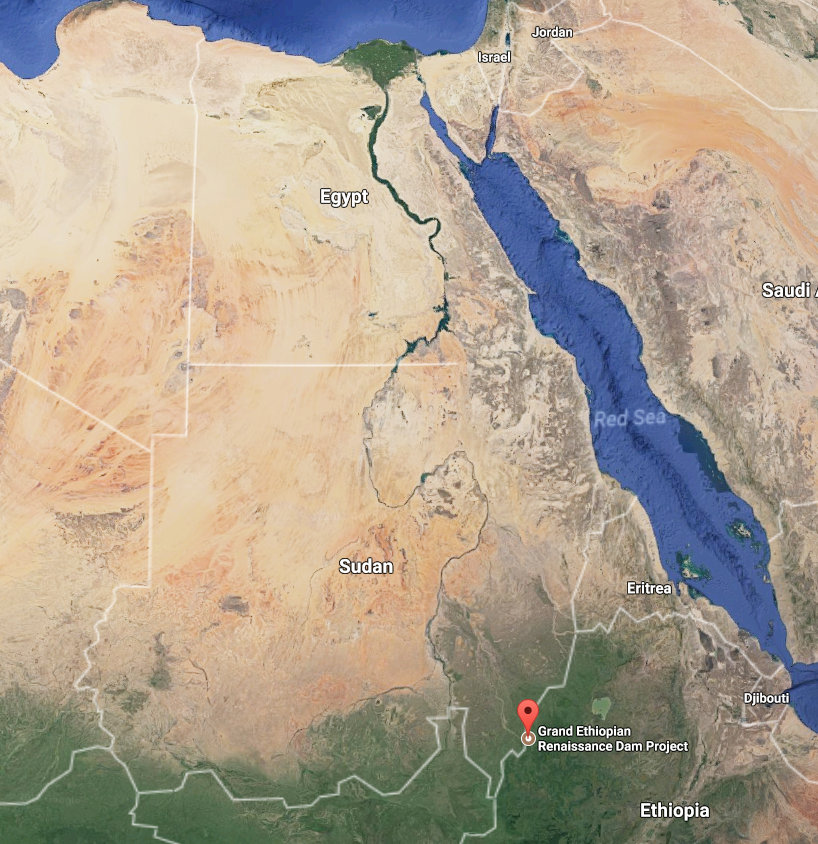
The Fight Over The Grand Ethiopia Renaissance Dam May Be a Harbinger of Future Conflict
A threat to the Nile is a threat to Egypt. When Ethiopia began construction of the Grand Ethiopia Renaissance Dam (GERD), Egypt recognized the threat. The $4.5 billion project spanning the Nile’s main tributary, known as the “Blue Nile,” has met staunch opposition from Egypt. Former Egyptian President Anwar Sadat commented on Ethiopia’s initial construction plans:
“We are not going to wait to die of thirst in Egypt, we’ll go to Ethiopia and die there.”
Egypt and Ethiopia met in D.C. earlier this year to discuss how much water would be diverted from the Blue Nile each year to the dam’s reservoir. Despite some initial diplomatic success, talks broke down when Ethiopia withdrew from the discussion to “seek further consultation from stakeholders.”
What’s at stake?
Ethiopia plans to use Blue Nile’s waters to generate hydroelectric power for millions of Ethiopians and turn the country into Africa’s largest energy exporter. To do so, Ethiopia will need to divert water from the Blue Nile to fill a reservoir, effectively choking off the Nile’s main tributary in the process.
Egypt is right to be concerned about the Nile. It depends on the Nile for roughly 90% of its fresh water, and Egypt’s booming population is already water stressed. The U.N. has predicted that Egypt will face water shortages as soon as 2025, regardless of the construction of the GERD.
Control the water, control the people
Access to fresh water in a warming world is a growing source of conflict. The World Health Organization has warned that half of the world’s population will be living in water stressed areas by 2030. Access to dwindling water sources has already sparked riots, mass migration, and civil wars.
U.S. officials are increasingly concerned about how water conflicts might threaten U.S. interests. The Director of National Intelligence (DNI) said in a 2012 assessment:
“During the next 10 years, many countries important to the United States will experience water problems—shortages, poor water quality, or floods—that will risk instability and state failure, increase regional tensions, and distract them from working with the United States on important US policy objectives.”
Many of the predictions in the 2012 DNI assessment have come to fruition. Terror groups and insurgency movements have targeted dams and water purification facilities to limit local governments’ ability to provide clean water to its citizens. Once malign actors control local water sources, they use access as leverage to coerce people into joining their cause.
For instance, Boko Haram has established itself as a major employer and resource distributor in the poverty-stricken areas around Lake Chad. Many civilians now see the terror group as the only competent governing body in some regions. When civilians look to terror groups as legitimate providers, it becomes difficult for the U.S. to eliminate those groups and restore stability to the region.
America’s role
The U.S. has an important role to play in mitigating water conflict. No other nation has the financial resources to develop the technology and build the infrastructure needed to bring clean water to dry places. Water is potentially a powerful humanitarian tool; it can help reduce public reliance on terror groups and stabilize water stressed regions before conflict breaks out.
The conflict between Egypt and Ethiopia over the Nile is emblematic of a worldwide problem. The U.S. has devoted time and resources to helping two U.S. partners work this problem out. Future belligerents may not be so eager to talk. Protecting water resources and preparing for the eventuality of water stress in a warmer world should be a top U.S. priority.
Maybe the threat to the Nile should be considered a threat to all of us.





